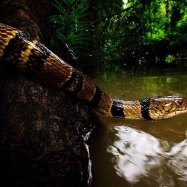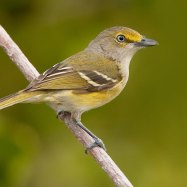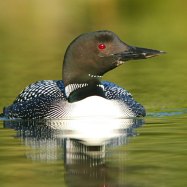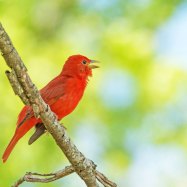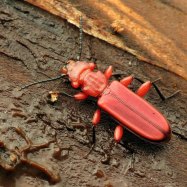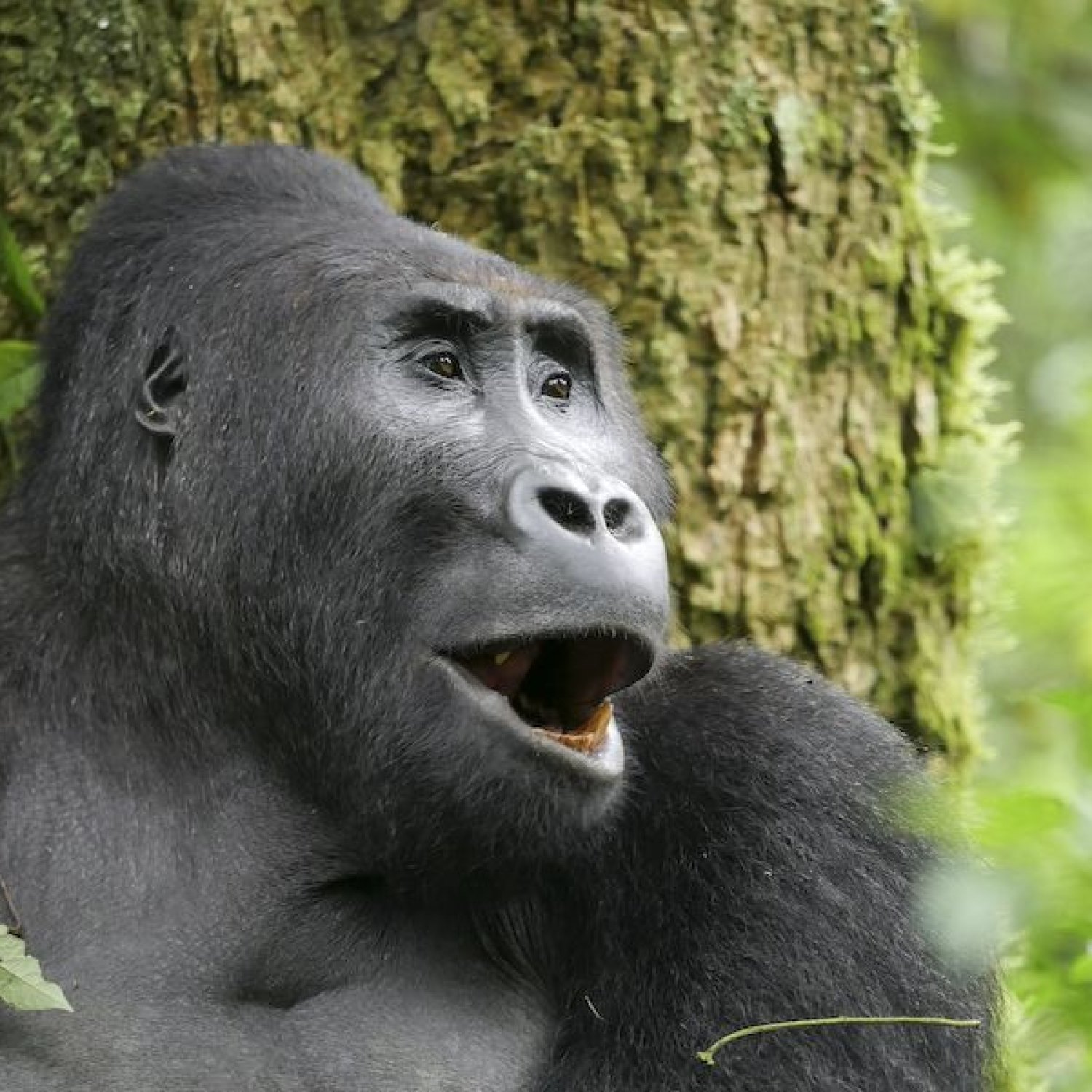
Eastern Lowland Gorilla
1.5 to 1.8 meters
The gentle giants of the Eastern Lowland Gorilla, found in the Eastern Democratic Republic of Congo, belong to the Hominidae family. These large and stocky animals can grow up to 1.5-1.8 meters in length. With their unique appearance and behavior, these gorillas are a must-see for any animal lover. #Animals #Gorillas #Congo #Wildlife
Animal Details Summary:
Common Name: Eastern Lowland Gorilla
Kingdom: Animalia
Habitat: Tropical rainforests
The Majestic Eastern Lowland Gorilla: A Primate of the Rainforest
Deep in the heart of the tropical rainforests of the Eastern Democratic Republic of Congo, there is a magnificent creature that roams the dense vegetation. With its large and stocky body, covered in black fur, the Eastern Lowland Gorilla is an iconic symbol of power and resilience in its natural habitat. This species, also known by its scientific name Gorilla beringei graueri, is one of the four subspecies of gorillas and is the largest of them all.The Eastern Lowland Gorilla belongs to the Animalia kingdom, the same kingdom that humans belong to Eastern Lowland Gorilla. They are classified as mammals, belonging to the class Chordata and the order Primates. These gentle giants are a part of the Hominidae family, which includes other great apes such as chimpanzees, bonobos, and orangutans. However, the Eastern Lowland Gorilla is the largest of the great apes, standing at an impressive height of 1.5 to 1.8 meters and weighing between 140 to 210 kilograms.
Living in the tropical rainforests, the Eastern Lowland Gorilla mainly feeds on plants, making it a herbivorous species. This means that their diet primarily consists of fruits, leaves, and stems. These apes are also known for their intelligence and have been observed using tools to help them with their foraging. They have the ability to select and use sticks to dig for food or break open fruits Eider.
The gorillas' geographical distribution is limited to the eastern part of the Democratic Republic of Congo, making it a highly localized species. This area is located in the Central African region, bordered by other countries such as Uganda, Rwanda, and Tanzania. The Eastern Lowland Gorilla is found in the lowland rainforests, mostly in the Kahuzi-Biega National Park and Maiko National Park. These parks are home to other diverse wildlife and offer necessary protection to these endangered animals.
The Democratic Republic of Congo is the country of origin of the Eastern Lowland Gorilla, and it has a significant cultural and symbolic importance for the people living in this region. In local languages, gorillas are often referred to as "men of the forest," reflecting the deep connection and respect that the local communities have for these animals. However, the gorillas' population has been facing threats from human activities, such as poaching and habitat destruction, which have led to their endangered status.
The Eastern Lowland Gorillas' bodies are covered in thick, black fur, providing insulation in their tropical rainforest habitat. This coloration also makes them less conspicuous among the dark forest canopy, providing them with natural camouflage. The fur on their bodies is also thicker and longer than that of other gorilla species, further protecting them from the wet and humid climate of the rainforest.
The gorillas' bodies are large and stocky, but they are also highly agile and can move quickly through the trees. Their arms are longer than their legs, making them excellent climbers and allowing them to swing from branch to branch with ease. It is estimated that they can cover up to one kilometer a day as they move through their home range, which can span up to 25 square kilometers.
The Eastern Lowland Gorilla is a vital part of the rainforest ecosystem, playing a significant role in seed dispersal and promoting plant growth throughout their range. As they consume fruits and seeds, they help these plants to regenerate and spread to new areas. This makes them an essential species for maintaining the delicate balance and diversity of the rainforest.
However, the Eastern Lowland Gorilla's population has been facing significant threats in recent years. One of the main threats is poaching, where these animals are hunted for their meat, or their offspring are taken to be sold as pets. Habitat loss, due to deforestation and land conversion for agricultural purposes, is another major threat to their survival. This not only reduces the gorillas' natural habitat but also increases their chances of contact with humans, leading to potential diseases.
Conservation efforts are in place to protect the Eastern Lowland Gorilla and their habitat. This includes establishing national parks, increasing anti-poaching efforts, and creating community-based conservation programs to involve local communities in protecting the gorillas. These efforts have shown promising results, with the gorilla population slowly recovering from the damage caused by poaching and habitat destruction.
However, there is much more work to be done to ensure the Eastern Lowland Gorilla's survival. As their natural habitat continues to face threats from human activities, it is crucial to educate communities and raise awareness about the importance of protecting these animals. Additionally, sustainable practices, such as ecotourism, can provide alternative sources of income for local communities while promoting the conservation of the gorillas and their habitat.
In conclusion, the Eastern Lowland Gorilla is a majestic and integral part of the tropical rainforests of the Eastern Democratic Republic of Congo. Their large and stocky bodies, coupled with their intelligence and adaptability, make them a unique and fascinating species to study. However, their population is still at risk, and it is our responsibility to protect and preserve these magnificent animals for future generations. With proper conservation efforts and community involvement, we can ensure the future of the Eastern Lowland Gorilla in the rainforests they call home.

Eastern Lowland Gorilla
Animal Details Eastern Lowland Gorilla - Scientific Name: Gorilla beringei graueri
- Category: Animals E
- Scientific Name: Gorilla beringei graueri
- Common Name: Eastern Lowland Gorilla
- Kingdom: Animalia
- Phylum: Chordata
- Class: Mammalia
- Order: Primates
- Family: Hominidae
- Habitat: Tropical rainforests
- Feeding Method: Herbivorous
- Geographical Distribution: Eastern Democratic Republic of Congo
- Country of Origin: Democratic Republic of Congo
- Location: Eastern Democratic Republic of Congo
- Animal Coloration: Black
- Body Shape: Large and stocky
- Length: 1.5 to 1.8 meters
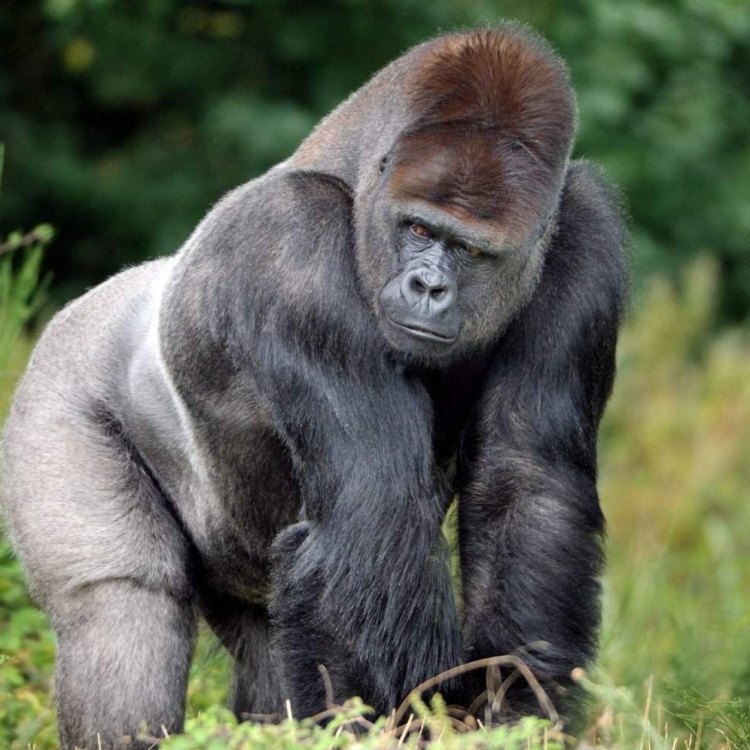
Eastern Lowland Gorilla
- Adult Size: Up to 250 kilograms
- Average Lifespan: Between 35 and 50 years
- Reproduction: Sexual
- Reproductive Behavior: Polygamous
- Sound or Call: Loud roars and grunts
- Migration Pattern: Non-migratory
- Social Groups: Troops consisting of multiple males and females
- Behavior: Primarily terrestrial and diurnal
- Threats: Habitat loss, poaching, and civil unrest
- Conservation Status: Critically Endangered
- Impact on Ecosystem: Keystone species, seed dispersal
- Human Use: Tourism, research
- Distinctive Features: Large body size, silver-colored back hair
- Interesting Facts: Eastern Lowland Gorillas are the largest living primates
- Predator: No natural predators
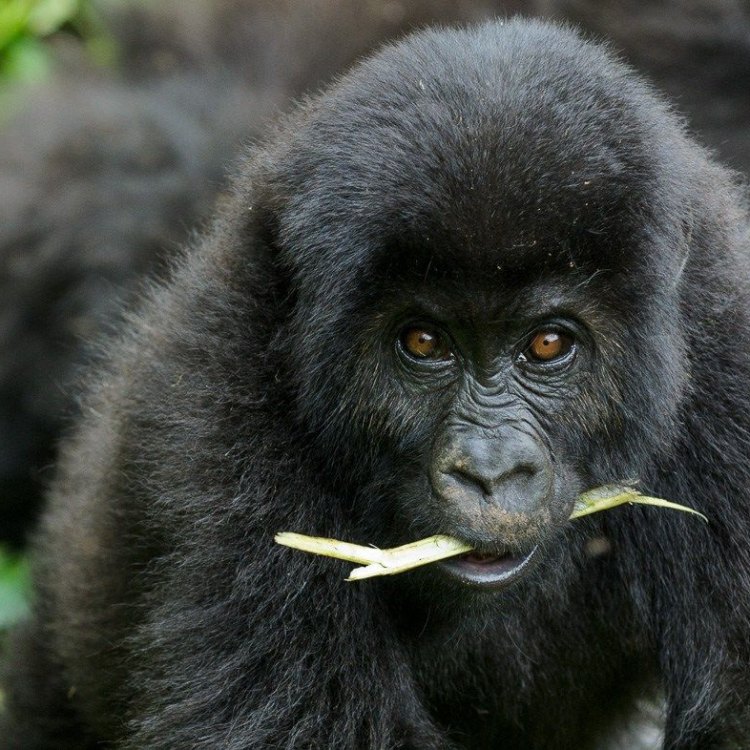
Gorilla beringei graueri
The Majestic Eastern Lowland Gorilla: A Keystone Species in Danger
Lurking deep in the dense forests of the Democratic Republic of Congo, lies a creature that is both awe-inspiring and elusive- the Eastern Lowland Gorilla. Renowned for its impressive size, majestic roar, and complex social behaviors, this gentle giant is a prominent figure in the animal kingdom.Adult Size: Up to 250 kilograms
The Eastern Lowland Gorilla, also known as Gorilla beringei graueri, is one of four subspecies of gorilla found in Africa. It is the largest of all living primates, with adult males weighing up to 250 kilograms (550 pounds) PeaceOfAnimals.Com. This subspecies is found in the lowland tropical forests of eastern Democratic Republic of Congo, along with the Virunga National Park and Kahuzi-Biega National Park.
Average Lifespan: Between 35 and 50 years
Like all great apes, Eastern Lowland Gorillas have relatively long lifespans. In the wild, they can live up to 35 years, while in captivity they can live up to 50 years. Female gorillas reach sexual maturity at around 11-12 years of age, while males become sexually mature at around 15 years of age.
Reproduction: Sexual
Eastern Lowland Gorillas have a unique reproductive behavior that is similar to humans. They are a sexually reproducing species, with females engaging in a menstrual cycle and giving birth to one offspring at a time. Unlike other primates, gorilla females have a gestation period of approximately eight and a half months.
Reproductive Behavior: Polygamous
One interesting aspect of Eastern Lowland Gorillas' reproductive behavior is that it is polygamous, with males forming multiple mate bonds with different females within their troop. A troop typically consists of one male, several females, and their offspring Elephant Bird. This polygamous behavior ensures that the strongest and most dominant males have the opportunity to breed and pass on their genes.
Sound or Call: Loud roars and grunts
Eastern Lowland Gorillas have an impressive vocal repertoire, with their most well-known sound being the loud roar. Male gorillas produce loud, deep roars that can be heard up to one kilometer away. They also have more subtle vocalizations, such as grunts, hoots, and barks, that are used for communication within the troop.
Migration Pattern: Non-migratory
While some species of gorillas are known to migrate seasonally, such as the mountain gorillas, Eastern Lowland Gorillas are non-migratory. They are known to have small home ranges and generally stay within their designated area, moving only when resources become scarce.
Social Groups: Troops consisting of multiple males and females
Eastern Lowland Gorillas are social animals and are usually found in large groups called troops. These troops consist of multiple males and females, with the dominant male being the leader and protector of the group. Within the troop, social bonds are strong, and individuals often engage in grooming and play behaviors to strengthen their relationships.
Behavior: Primarily terrestrial and diurnal
Unlike other primates, Eastern Lowland Gorillas are primarily terrestrial, meaning they spend most of their time on the ground. They are also diurnal, meaning they are most active during the day. However, they are known to build nests in trees to sleep at night, providing them with security from predators.
Threats: Habitat loss, poaching, and civil unrest
Despite their impressive size and strength, Eastern Lowland Gorillas face numerous threats to their survival. The main threat is habitat loss due to deforestation and human encroachment for agricultural purposes. This has significantly reduced their range and fragmented their populations, making them more vulnerable to other threats, such as poaching and civil unrest.
Conservation Status: Critically Endangered
In 1994, the International Union for Conservation of Nature (IUCN) designated the Eastern Lowland Gorilla as Critically Endangered on the Red List of Threatened Species. This means that they face an extremely high risk of extinction in the wild in the near future. According to the IUCN, it is estimated that there are currently only around 3,800 Eastern Lowland Gorillas left in the wild.
Impact on Ecosystem: Keystone species, seed dispersal
The Eastern Lowland Gorilla plays a significant role in its ecosystem, acting as a keystone species. As herbivores, they help maintain the balance of the forest by dispersing seeds through their feces, allowing for new plant growth. They also contribute to shaping the forest by clearing pathways and creating new feeding areas through their behavior.
Human Use: Tourism, research
Despite being critically endangered, Eastern Lowland Gorillas are still a valuable resource for humans. They are a popular tourist attraction, with visitors paying top dollar for the opportunity to see them in the wild. Additionally, they are also used for research, providing important information about their species and the impact of human activities on their survival.
Distinctive Features: Large body size, silver-colored back hair
Eastern Lowland Gorillas have several distinctive features that set them apart from other subspecies. Their large body size is one of the most prominent physical characteristics, along with the silver-colored back hair that gives them a striking appearance. Males also develop a silver-colored saddle on their backs as they age, earning them the nickname "silverback gorillas."
Interesting Facts: Eastern Lowland Gorillas are the largest living primates
In addition to being the largest of all living primates, Eastern Lowland Gorillas have several other interesting facts that make them stand out. They are the largest of the four gorilla subspecies, with the mountain gorilla being the second-largest. They are also one of the few primates that have a natural population decline due to their low reproductive rate and high mortality rates.
Predator: No natural predators
Despite living in an environment filled with predators, Eastern Lowland Gorillas have no natural predators. This is due to their impressive size and strength, making them difficult targets for other animals. However, humans pose a significant threat to their survival through hunting and habitat destruction.
In conclusion, the Eastern Lowland Gorilla is a fascinating species that plays a crucial role in its ecosystem. However, its population is rapidly declining due to a combination of human activities and natural threats. It is our responsibility to ensure their survival and protect this keystone species for future generations to come. Let us work together to spread awareness and take action to save the Eastern Lowland Gorillas from the brink of extinction.
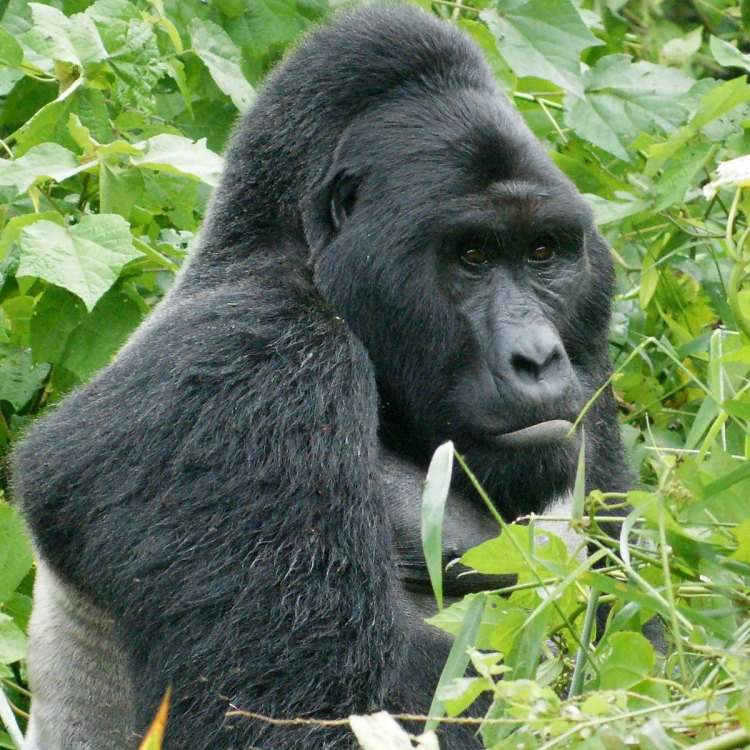
The Majestic Eastern Lowland Gorilla: A Primate of the Rainforest
Disclaimer: The content provided is for informational purposes only. We cannot guarantee the accuracy of the information on this page 100%. All information provided here may change without prior notice.

